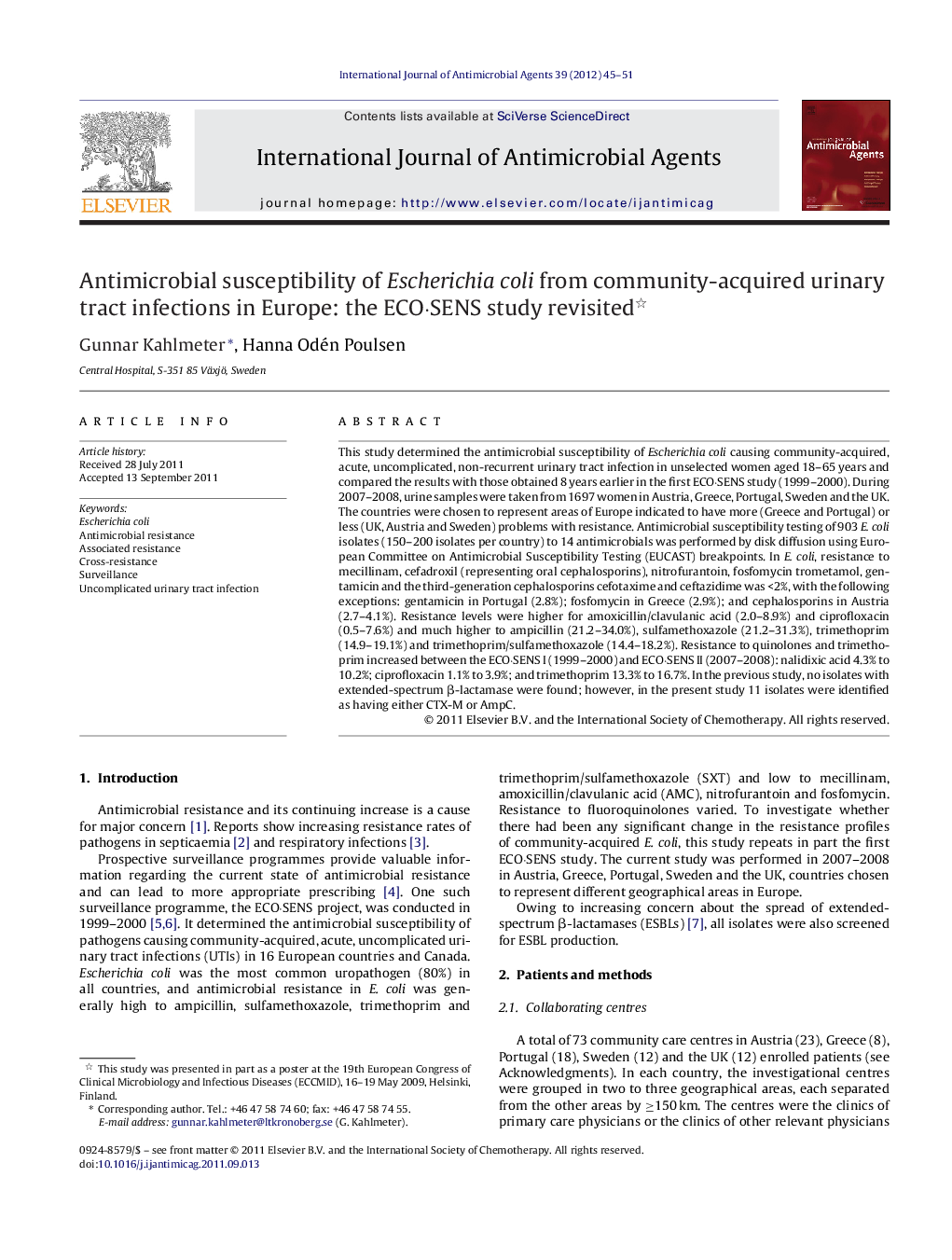| Article ID | Journal | Published Year | Pages | File Type |
|---|---|---|---|---|
| 3359330 | International Journal of Antimicrobial Agents | 2012 | 7 Pages |
This study determined the antimicrobial susceptibility of Escherichia coli causing community-acquired, acute, uncomplicated, non-recurrent urinary tract infection in unselected women aged 18–65 years and compared the results with those obtained 8 years earlier in the first ECO·SENS study (1999–2000). During 2007–2008, urine samples were taken from 1697 women in Austria, Greece, Portugal, Sweden and the UK. The countries were chosen to represent areas of Europe indicated to have more (Greece and Portugal) or less (UK, Austria and Sweden) problems with resistance. Antimicrobial susceptibility testing of 903 E. coli isolates (150–200 isolates per country) to 14 antimicrobials was performed by disk diffusion using European Committee on Antimicrobial Susceptibility Testing (EUCAST) breakpoints. In E. coli, resistance to mecillinam, cefadroxil (representing oral cephalosporins), nitrofurantoin, fosfomycin trometamol, gentamicin and the third-generation cephalosporins cefotaxime and ceftazidime was <2%, with the following exceptions: gentamicin in Portugal (2.8%); fosfomycin in Greece (2.9%); and cephalosporins in Austria (2.7–4.1%). Resistance levels were higher for amoxicillin/clavulanic acid (2.0–8.9%) and ciprofloxacin (0.5–7.6%) and much higher to ampicillin (21.2–34.0%), sulfamethoxazole (21.2–31.3%), trimethoprim (14.9–19.1%) and trimethoprim/sulfamethoxazole (14.4–18.2%). Resistance to quinolones and trimethoprim increased between the ECO·SENS I (1999–2000) and ECO·SENS II (2007–2008): nalidixic acid 4.3% to 10.2%; ciprofloxacin 1.1% to 3.9%; and trimethoprim 13.3% to 16.7%. In the previous study, no isolates with extended-spectrum β-lactamase were found; however, in the present study 11 isolates were identified as having either CTX-M or AmpC.
